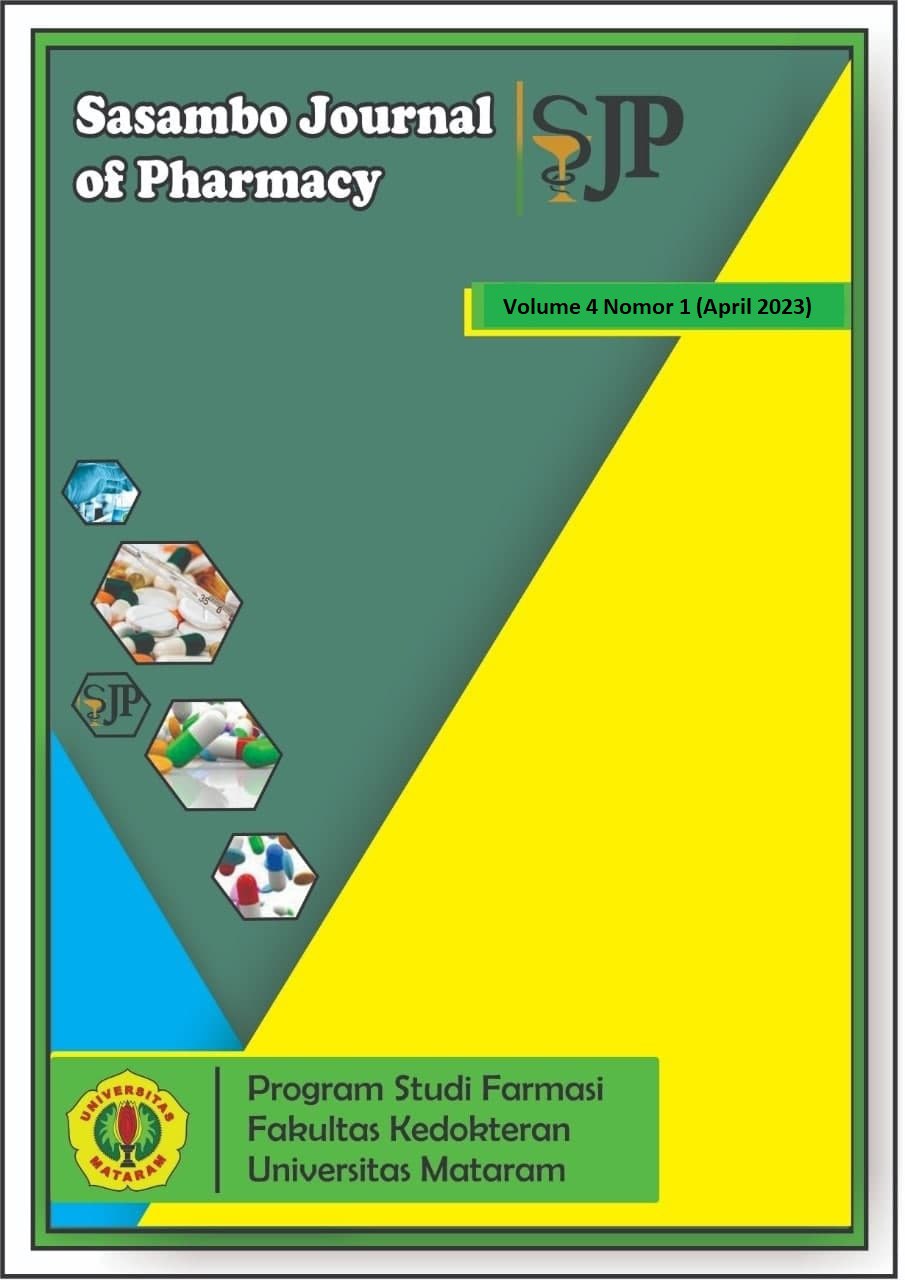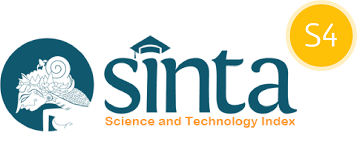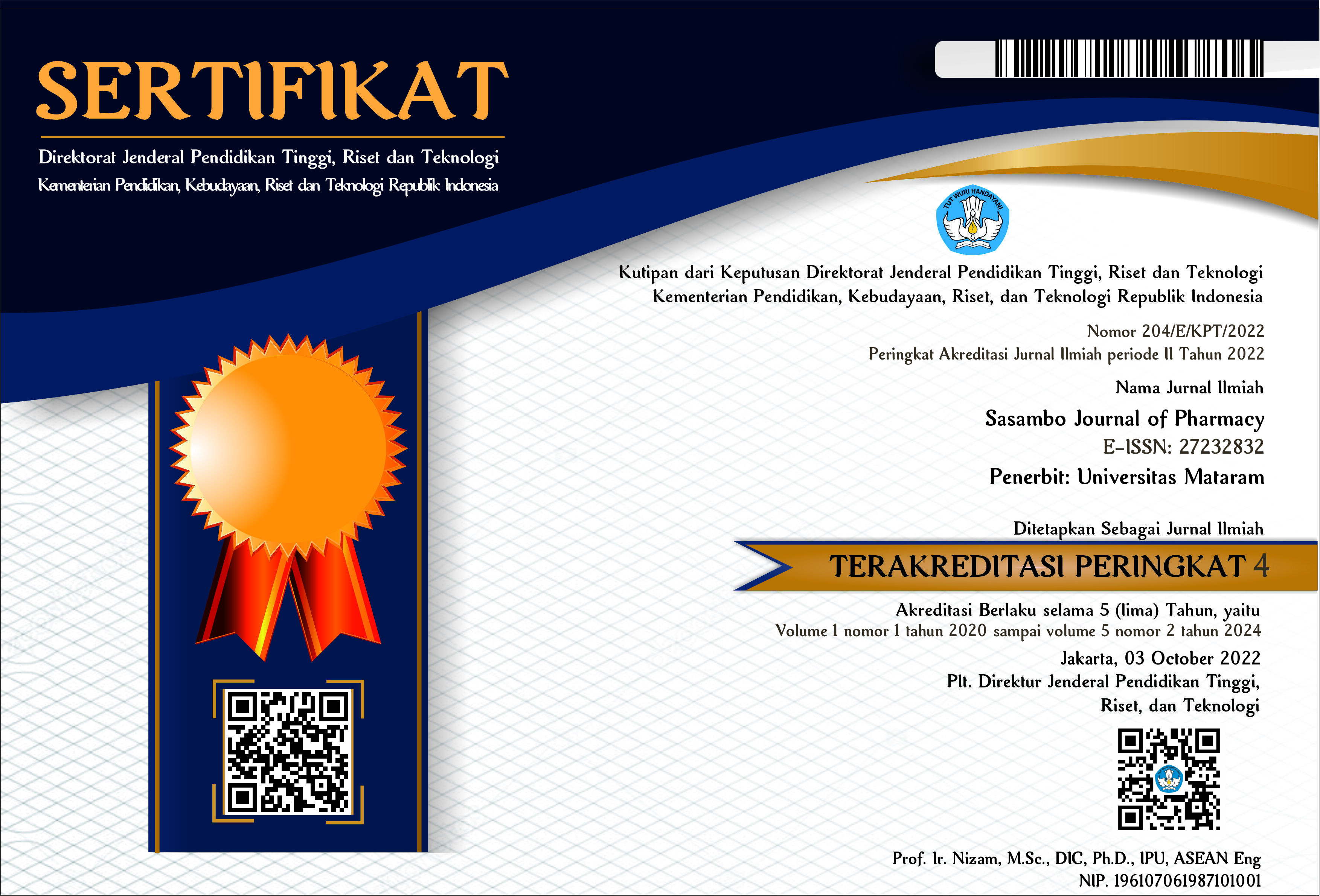Penggunaan obat off-label pada pasien anak di salah satu rumah sakit daerah Provinsi Nusa Tenggara Barat tahun 2017
DOI:
10.29303/sjp.v4i1.219Downloads
Abstract
Due to insufficient pharmacokinetic-pharmacodynamic data, off-label medication usage in children is commonly observed. It might result in Drug Related Problems (DRPs) that could lead to morbidity in youngsters. In one of West Nusa Tenggara Province's public hospitals, this study sought to gain a general understanding of pediatric patients between the ages of 4 and 14 who were using off-label medications. Retrospective descriptive methodology is used in this investigation. For each of the following categories: age, indication, contraindication, dosage, and method of administration, the percentage of off-label drug use was calculatedbased on medical records and literature reviews. Out of 302 medications prescribed to outpatients, 14 (4.63%) and 5 (1.65%) were off-label for the patient's age, and indication categories were determined.Regarding inpatients, out of 369 medicines, the categories for age, indication, and dose, respectively, indicated 7.85% (29), 1.08% (4), and 2.43% (9) off-labels. Both pediatric inpatient and outpatient patients were found to be using drugs off-label. To ascertain the impact of off-label pharmacological advantages on the efficacy of drug therapy, more research is required.
Keywords:
off-label, inpatients, outpatientsReferences
Ariati., Antung, L., Kartinah, N., dan Intannia, D. (2014). Gambaran Penggunaan Obat Off-Label Pada Pasien Pediatrik Rawat Jalan Di RSUD Ulin Banjarmasin Periode Januari-Desember 2013. Jurnal Pharmascience, 2(1), 58-64.https://ppjp.ulm.ac.id/journal/index.php/pharma science/article/view/5814
BNFC. (2020). British National Formulary For Children. Pharmaceutical Press. London
Carter, B., and Fedorowic, Z. (2011). Antiemetic Treatment for Acute Gastroenteritis in Children: An Updated Cochrane Systematic Review with Meta-Analysis and Mixed Treatment Comparison in A Bayesian Framework. BMJ Open, 2(4), e00062. https://bmjopen.bmj.com/content/bmjopen/2/4/e0 00622.full.pdf
Cuzzolin, L. (2014). Off-label drug in the newborn. Journal of Pediatric and Neonatal Individualized Medicine, 3(2), 01-8.https://jpnim.com/index.php/jpnim/article/view/030224
Departemen Kesehatan, (2017). Informatorium Obat Nasional Indonesia. Badan Pengawasan Obat Dan Makanan. Jakarta
Jennifer, B.R., Kirkham, J.J., Nunn, A.J., and Pirmohamed, M. (2013). Adverse drug reactions and off-label and unlicensed medicines in children: a prospective cohort study of unplanned admissions to a paediatric hospital. British Journal of Clinical Pharmacology, 77(3), 545-53.https://pubmed.ncbi.nlm.nih.gov/23919928/
Kartinah, N., Intannia, D., dan Fitri, N. (2014). Overview Off-label Drug Uses In Pediatric At Ulin’s Hospital Banjarmasin. Jurnal Farmasi Klinik Indonesia, 3(3), 77-81. http://jurnal.unpad.ac.id/ijcp/article/view/12832
Kimland, E., and Odlind, V. (2012). Off-Label Drug Use in Pediatric Patients. Clinical Pharmacology & Therapeutics, 91(5), 796-801.https://www.researchgate.net/publication/223985497_Off-Label_Drug_Use_in_Pediatric_Patients
Lacy, C.F., Amstrong, L.L., Goldman,M.F., &Lance, L.L. (2009). Drug Information Handbook. Lexi-Comp. America.
Martino, M.D., and Chiarugi, A. (2015). Recent Advances in Pediatric Use of Oral Paracetamol in Fever and Pain Management. Pain and Therapy, 4(2), 149–68.https://link.springer.com/article/10.1007/s40122-015-0040-z
Pratiwi, A.A., Miski, A., Khairinnisa., Sofa, D.A., Akhmad, P., Ivan S.P., dan Rizky, A.2013. Peresepan Obat-obat Off-Label pada Pasien Anak Usia 0 Hingga 2 Tahun di Apotek Kota Bandung. Jurnal Farmasi Klinik Indonesia, 2(2), 39 50.https://jurnal.unpad.ac.id/ijcp/article/view/12700/pdf
License
Copyright (c) 2023 The Author(s)

This work is licensed under a Creative Commons Attribution 4.0 International License.
Authors who publish with Sasambo Journal of Pharmacy (SJP), agree to the following terms:
- Authors retain copyright and grant the journal right of first publication with the work simultaneously licensed under a Lisensi Creative Commons Atribusi 4.0 Internasional. This license allows authors to use all articles, data sets, graphics and appendices in data mining applications, search engines, web sites, blogs, and other platforms by providing an appropriate reference. The journal allows the author(s) to hold the copyright without restrictions and will retain publishing rights without restrictions.
- Authors are able to enter into separate, additional contractual arrangements for the non-exclusive distribution of the journal's published version of the work (e.g., post it to an institutional repository or publish it in a book), with an acknowledgment of its initial publication in Sasambo Journal of Pharmacy
- Authors are permitted and encouraged to post their work online (e.g., in institutional repositories or on their website) prior to and during the submission process, as it can lead to productive exchanges, as well as earlier and greater citation of published work (See The Effect of Open Access).







